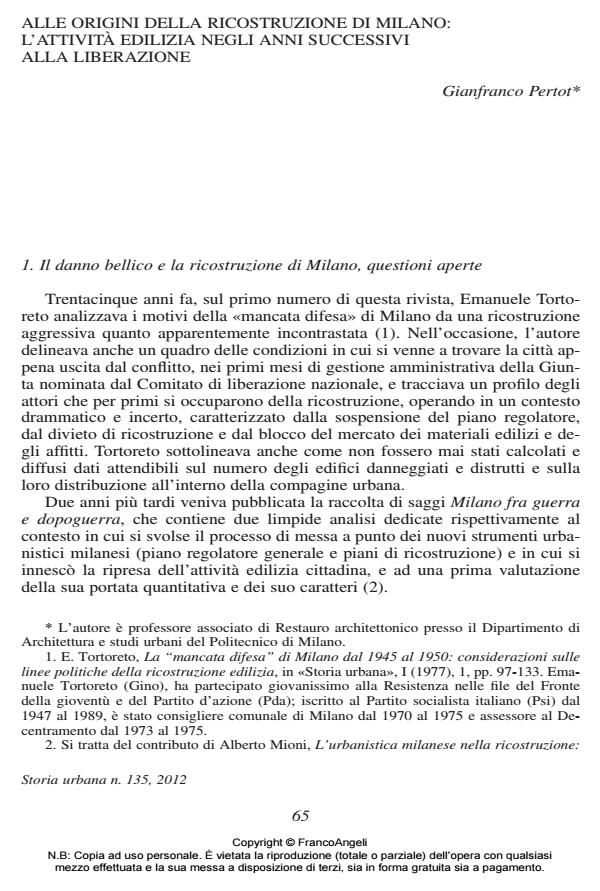The origin of the reconstruction of Milan: building activities after the Liberation of Italy.
Journal title STORIA URBANA
Author/s Gianfranco Pertot
Publishing Year 2013 Issue 2012/135
Language Italian Pages 25 P. 65-89 File size 507 KB
DOI 10.3280/SU2012-135004
DOI is like a bar code for intellectual property: to have more infomation
click here
Below, you can see the article first page
If you want to buy this article in PDF format, you can do it, following the instructions to buy download credits

FrancoAngeli is member of Publishers International Linking Association, Inc (PILA), a not-for-profit association which run the CrossRef service enabling links to and from online scholarly content.
The paper presents an evaluation of the protocol for requests for building permits carried out by the City of Milan, through various committees, in the period 1945-1947. This was the initial phase of the reconstruction of a city heavily affected by second world war bombings, a city with no plan, after the suspension of the 1934 Albertini plan decreed by Cln (Comitato di liberazione nazionale/National liberation commitee) in 1945, (but with many building contract stipulated with private investors still in force, especially in the central areas), while every construction activity was interdicted. Analysis of the data obtained from the documents is accompanied by an evaluation of attempts of committees to face the conservation problems raised by reconstruction activity. In the same period. the City of Milan was working out a new tow plan, the implementation of which, however, was hindered by a long approval process. At the same time, we see the start of the release of a large number of "in precario" (temporary) building permits, a custom which was to continue and expand.
Keywords: War bombing damages, census Requests for reconstruction Milan Period, 1945-1947
Gianfranco Pertot, Alle origini della ricostruzione di Milano: l’attività edilizia negli anni successivi alla liberazione in "STORIA URBANA " 135/2012, pp 65-89, DOI: 10.3280/SU2012-135004